False Facts About Sourdough You Thought Were True
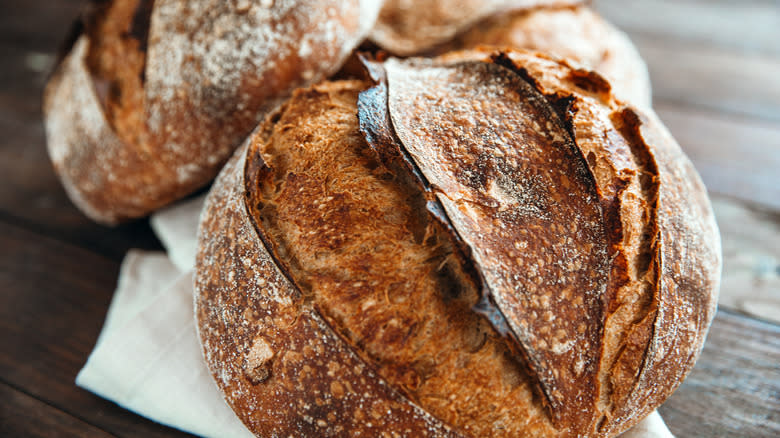
Sourdough is having a moment right now. Its popularity among home bakers might have peaked during the height of the COVID-19 pandemic, but it's still a big deal. Not only are plenty of folks still baking it at home, but you can also find sourdough loaves everywhere, from bougie bakeries to everyday grocery stores. And no brunch menu would be complete without some kind of sourdough toast on the menu.
But, despite its popularity, people are still getting a lot of things wrong about sourdough. There are all kinds of myths and misconceptions wrapped up with this bread that can be tough to wade through. We wanted to get to the bottom of things, so we've uncovered these false facts about sourdough that many people think are true.
From the misconception that it's difficult to make sourdough bread to the incorrect idea that sourdough has no nutritional benefits over regular bread, there's a lot to unpack. We've got the details about these false facts and more. So, you'll soon be in the know about sourdough. Whether you want to bake it or just want to know more about what you're eating, we've got you covered.
Read more: The Most Useless Cooking Utensils, According To Chefs
Sourdough Bread Is Difficult To Make
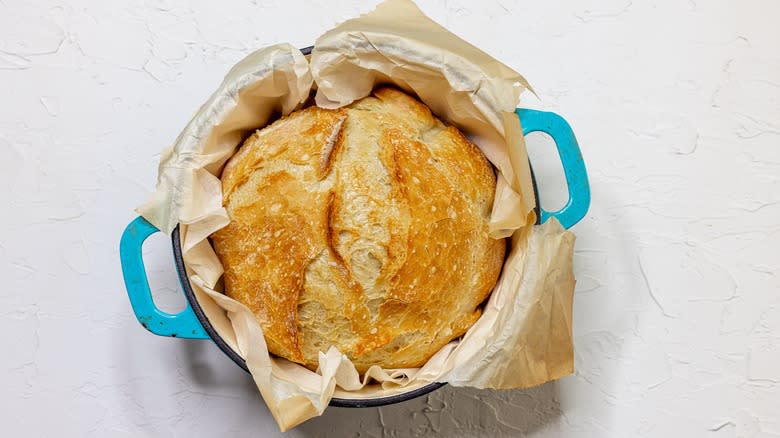
Some people will tell you that sourdough bread is difficult to bake, but this simply isn't true. Like all baking, there are some easier recipes and some more complex and in-depth recipes, but claiming that it's difficult across the board is simply untrue. It can be as easy or as complicated as you want it to be. But, even the recipes that seem difficult to a beginner will feel simpler once you know what you're doing.
For instance, when you start out, you might want to begin with a simple no-knead sourdough recipe. This kind of recipe involves very little active time and effort. You basically mix the ingredients, leave them to prove, shape the dough, and bake it. There's not much to it. Once you've tried it a few times and got your head around the baking schedule, you could practically do it in your sleep — although we wouldn't recommend it.
There are also much more complicated recipes that take several days and have various stages of kneading, proving, and shaping. These are, of course, more difficult, but there are bread recipes that use commercial yeast that are just as tricky. The major difference is with using a starter instead of packaged yeast. And, while this can seem daunting at first, it soon becomes second nature.
Grocery Store Sourdough Is Just As Good As Bakery Or Homemade Sourdough
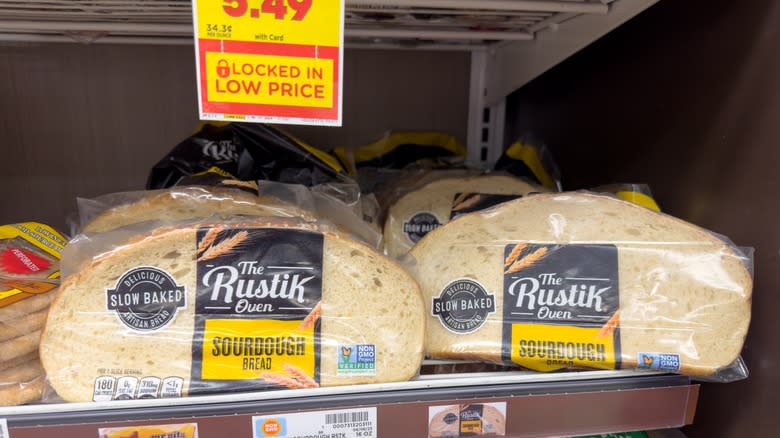
You might have seen sourdough for sale at the supermarket for a couple of dollars. Bakery sourdough, on the other hand, can cost as much as $10. So, it seems like a no-brainer. Save some money and get your bread somewhere convenient. It's the same thing, right? Actually, it might not be.
Supermarket sourdough is sometimes referred to as sourfaux. While you may be able to find genuine sourdough in a grocery store, it's often not the real deal. Instead, this kind of sourfaux is made using standard commercial yeast. There's usually some vinegar or another acidic ingredient added to the dough to give it a sour flavor.
Real sourdough is made using a starter rather than packaged yeast. This starter is active due to a colony of wild yeasts and good bacteria inside it — and these are what make the bread rise. A true sourdough should have just four ingredients: flour, water, salt, and a starter. If you look at a packet of grocery store sourdough and it contains any more ingredients than this, then it's probably inferior to the stuff you'd get in a bakery or make yourself at home. And, if it contains commercial yeast, then it isn't real sourdough at all. We'd recommend buying your loaves at a reputable bakery or going DIY.
Sourdough Isn't Any Healthier Than Regular Bread
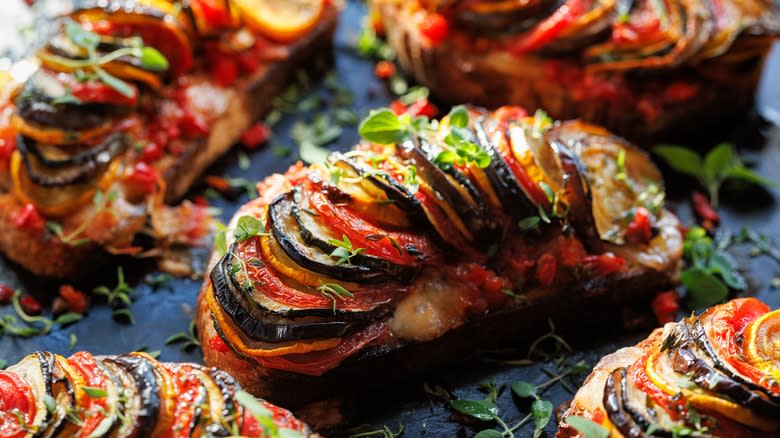
Sourdough bread and regular bread are made of similar stuff — although regular bread contains commercial yeast and often has a longer ingredient list. So, it seems sensible to assume that they're both about as healthy as one another. But, in actual fact, you should be eating more sourdough because it's the healthier and more nutritious option.
One of the reasons isn't really due to a difference in the amounts of nutrients between the two types of bread but their availability. There are compounds called phytates in all bread that bind to its nutrients, making them difficult for the body to absorb. However, sourdough contains lactic acid, which neutralizes the phytates and makes the nutrients more bioavailable and easier to absorb.
The fermentation process of sourdough bread also makes it gentler on the digestive system and easier for the gut to process. Some people who usually struggle with gluten find they can eat sourdough bread without issue. It's also prebiotic, meaning it contains ingredients that feed the good bacteria in the digestive system. As a result, eating sourdough can be beneficial to overall gut health.
You'll Need To Ask Someone For A Portion Of Their Starter
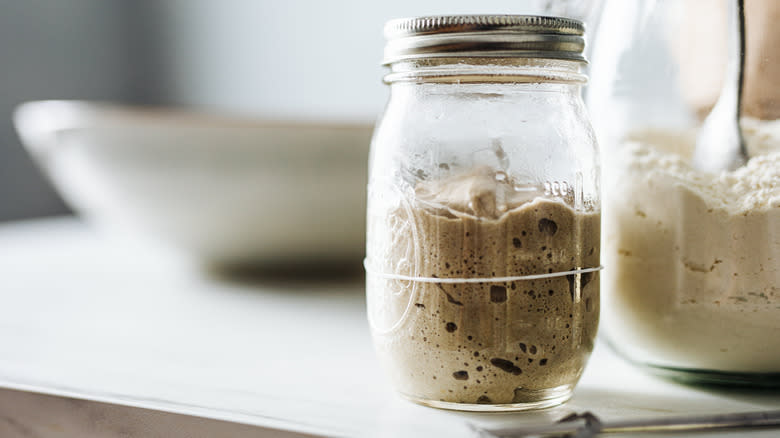
If you want to bake sourdough bread, you might worry that you'll need to ask someone for a portion of their starter. This is all very well if you know someone who bakes sourdough. In fact, they'll probably be eager to have somebody to give some starter to. But, it can be an issue if you don't have a baker in your life. Don't worry, because you aren't going to have to bug somebody for a jar of their wild yeast colony — you can make a starter yourself from scratch.
You might be surprised to learn that making sourdough starter is a simple process. While some people say you need grapes or other fruits for their yeast content, all that's required is flour, water, and a container. Mix together equal weights of flour and water in your chosen container, cover it loosely (if you cover it tightly, the microorganisms in the air won't be able to get in), and leave it at room temperature. Continue adding flour and water daily, and you should start to see some activity (in the form of bubbles) after around three or four days. By the time your starter is around a week old, you should be seeing a lot of activity — it's now ready to bake with.
Sourdough Starter Always Needs Daily Feeding
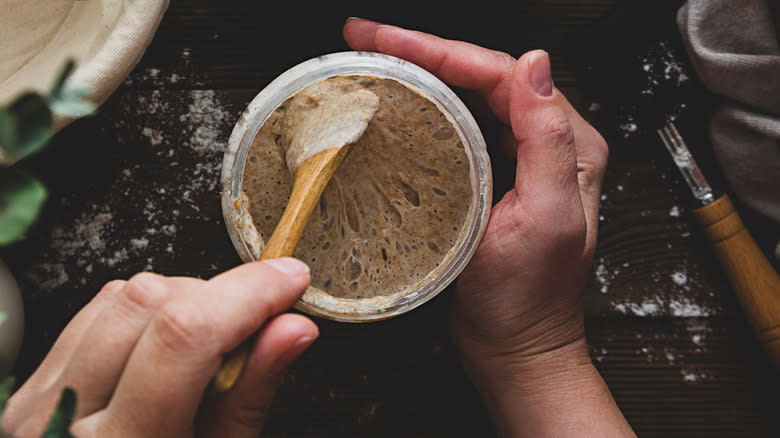
Sourdough starter is known for being hungry. One thing you've probably heard, even if you're new to sourdough, is that you have to feed your starter. We're not saying you've got to make it a sandwich and feed it kibble. Rather, it needs to have equal weights of flour and water stirred into it to provide it with the food it requires to stay active and make your bread rise.
Many people believe you always have to feed your starter daily. And, this is one of the factors that put folks off baking sourdough. It seems like a lot of maintenance. However, the idea of daily feeding is a myth — well, sort of. If you keep your starter at room temperature, then you usually do need to feed it daily. Some people who do a lot of baking may even feed their starter more than once a day. However, if you only intend to bake a loaf or two a week, you can avoid the need for daily feedings by storing your sourdough starter in the fridge.
The lower temperature slows down the starter's activity, which reduces its need for food. If you give it a good feeding beforehand, you can store it in the fridge for up to three weeks. Once you're ready to use it again, get it out of the fridge, let it warm up for a few hours, and resume your usual feeding schedule.
You'll Have To Throw Out A Lot Of Starter If You Bake Your Own Sourdough
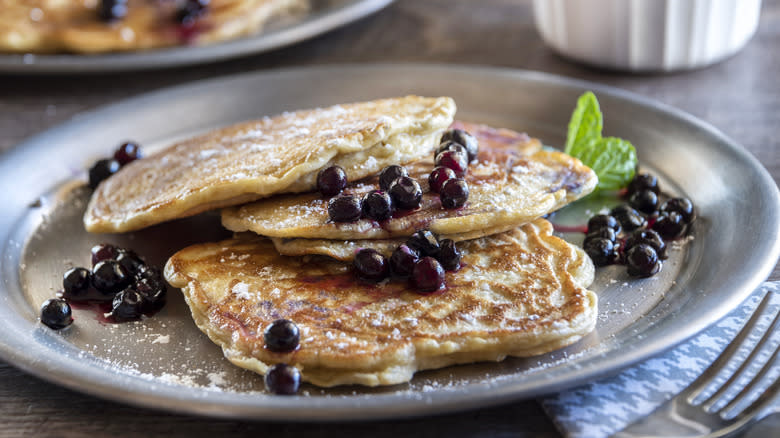
Now you know that sourdough starters need regular feeding, you might assume that you'll need to throw out a lot of starter. Inevitably, the starter will begin to fill up the jar and you'll have to pour some away before you do another feeding to prevent it from overflowing. But, while there's some truth to this misconception, you don't have to waste any of the starter, unless you want to.
There's a good reason why you shouldn't throw out your excess sourdough starter — which is referred to as sourdough discard by those in the know. And the reason is that there's so much you can do with sourdough discard. Since you generally pour it off just before giving your starter its next feed, it isn't active enough to make bread dough rise, but it can be used in baked goods where it provides a tangy buttermilk-like flavor.
You can use sourdough discard in pancakes, crumb cakes, banana bread, crackers, and so much more. You can also turn your sourdough starter into cookies. With additional leavening agents, you can use your starter to make crumpets. So, there's no reason to waste this discarded starter — it's perfectly good for other baking projects.
Sourdough Always Tastes Sour
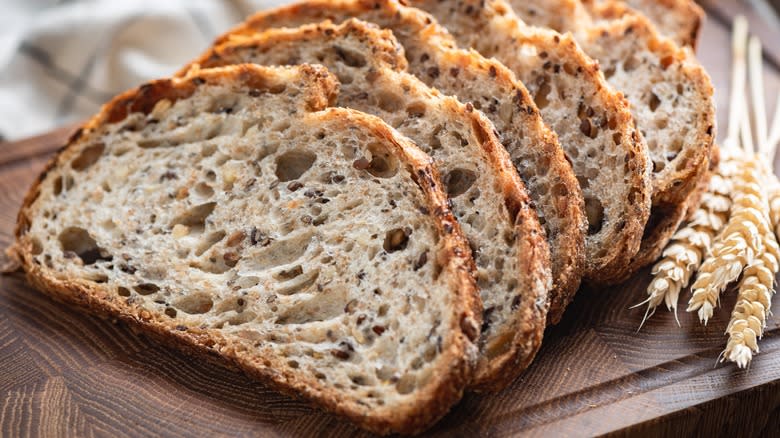
The name sourdough can be somewhat of a misnomer; it isn't always particularly sour. Some people might be put off by the idea of sour bread. While, for others, a lack of sourness is disappointing. But, whatever angle you're coming from, you might be surprised to try a slice of sourdough that isn't particularly sour at all.
In most cases, this type of bread isn't notably sour, but it does have a tang to it. The tanginess comes from lactic acid and acetic acid, which are present in the starter. All starters are individuals and their quantities of these acids vary depending on factors such as where you live and what flour you use — which is part of why San Francisco sourdough is known for its prominent sour notes.
If you want a bread that's particularly sour or tangy, then you should aim for a long, slow rise. This gives the yeast and good bacteria more time to multiply, which produces more of the acidic ingredients because they're waste products of the fermentation process. On the other hand, if you want a less sour bread, you should be adding baking powder to your dough. This neutralizes the acidity so your loaf turns out sweeter and less tangy.
It's Easy To Kill Sourdough Starter
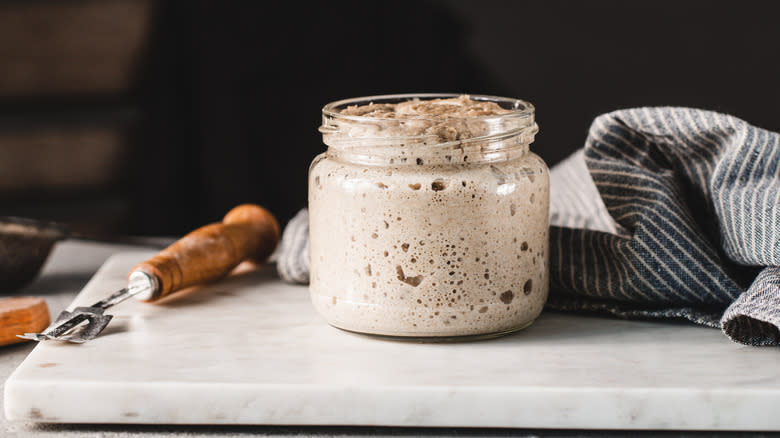
Many folks worry about killing their sourdough starter, as though it's an easy feat. But, in fact, it's hard to kill a starter. You really have to put some effort into it. And, even if it shows some signs of neglect, it's fairly easy to turn things around, making your starter happy and healthy once more.
There are very few things that will outright kill a starter. Starvation is one of them. If you don't feed your starter for long enough, it will die. But this is much easier to do at room temperature than in the fridge. A starter can just about survive for months in the fridge without dying. If you haven't fed your starter for a while and you're wondering if it's still active, start feeding it again and see what happens. It may bounce back in a couple of days.
One sure sign that it's time to retire your starter to the big trash can in the sky is mold. If there's any visible mold (including areas of pink or orange that might not look like obvious mold), you need to throw it out. Don't just scrape off the top and feed it because mold has tendrils that reach well below the surface.
However, if your starter has a dark layer of liquid on top, has been frozen, or is generally sluggish, it's not dead. Keep feeding it and you'll be surprised what it can come back from.
Sourdough Starters Are Only For Baking Bread
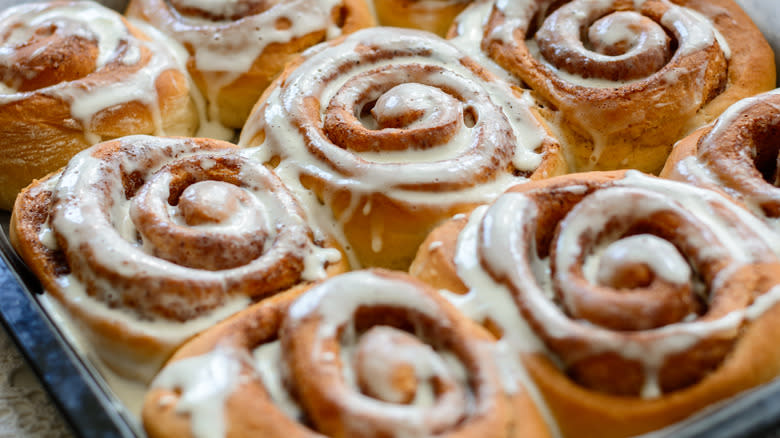
When you hear the word sourdough, you probably think of a crusty loaf of bread. But if you believe that you can only bake bread with a sourdough starter, then you're wrong. There are also plenty of other baked goods you can whip up with a sourdough starter. Using it as a leavening agent in place of commercial yeast brings that characteristic sourdough tang and often a chewier texture, too.
So, what can you bake with a starter? You can make sourdough cinnamon rolls, pizza bases, doughnuts, bagels, English muffins, and so much more. Basically, if it contains yeast, you can probably make a sourdough alternative. There's generally a difference in the time it takes to rise, as well as the method, so don't just shove a bit of starter in a conventional recipe in place of yeast and hope for the best. Instead, use a sourdough-specific recipe for the best results.
Sourdough Bread From San Francisco Is Objectively The Best
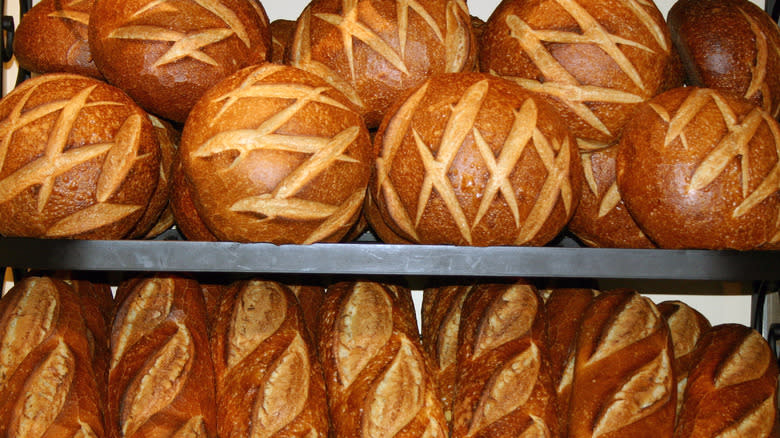
Does San Francisco really make the world's best sourdough bread? You might have heard people say that it does, as though it's an objective fact. But it's a much more nuanced argument than that. Sourdough bread in San Francisco may be different, but it might not be as different as some like to claim. Plus, there's such a thing as preference — not everyone likes its intense sourness.
To understand what's up with San Francisco sourdough, we first have to acknowledge that every starter has a unique balance of microorganisms, such as yeast and good bacteria. These microorganisms can vary by region and affect the flavor of the finished bread. The particular flavor of San Francisco sourdough may be down to a strain of bacteria that thrives in the city. It was identified in the '70s and named Lactobacillus sanfranciscensis. People once thought it was unique to the region, but it's since been identified in 90% of all countries where sourdough is made. So, maybe the city's sourdough isn't as special as some believe.
The reputation that San Francisco has for sourdough may just be because the Bay Area has been serious about bread for longer than the rest of the United States. Compared to the Wonder Bread of years gone by, the city's sourdough seemed special. But perhaps it's only as good as what any high-end bakery could produce.
Sourdough Bread Is Yeast-Free
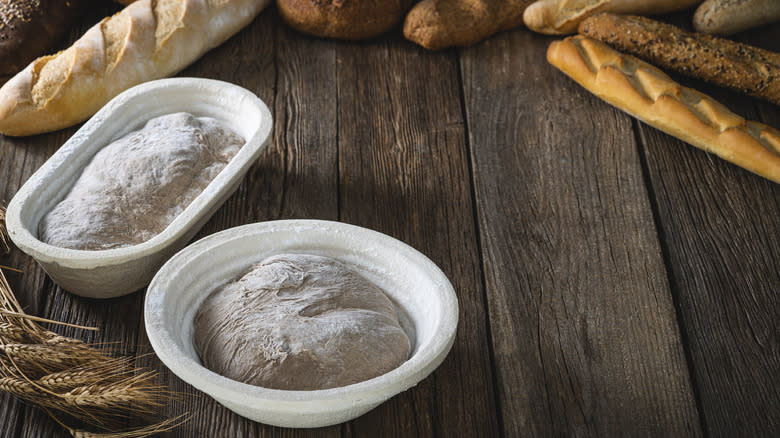
Because it uses a starter instead of commercial yeast, some people mistakenly believe that sourdough bread is yeast-free. But, just because it doesn't contain packaged yeast, it doesn't mean that it contains no yeast. There's yeast in the starter, just of a different type to the type you buy in packets from the grocery store.
To understand the difference, you need to know a little bit about commercial yeast. Once upon a time, there was no packaged yeast. Bread was either made from a starter, like sourdough, or using yeast produced during the beer-making process. At some point, people wanted more convenience, so packaged yeast was born. All packaged yeast is of the strain Saccharomyces cerevisiae, which was chosen from around 1,500 strains of yeast for its superior rising properties.
Sourdough starter, on the other hand, contains wild yeast. It's sometimes referred to as a symbiotic colony of bacteria and yeast — or SCOBY for short. This yeast comes from the air, the flour you use in the starter, and even from your hands and skin. There can be over 70 types of yeast in a sourdough starter. So, it's not that sourdough bread is yeast-free; it just contains yeast in a different form.
Sourdough Bread Is Probiotic
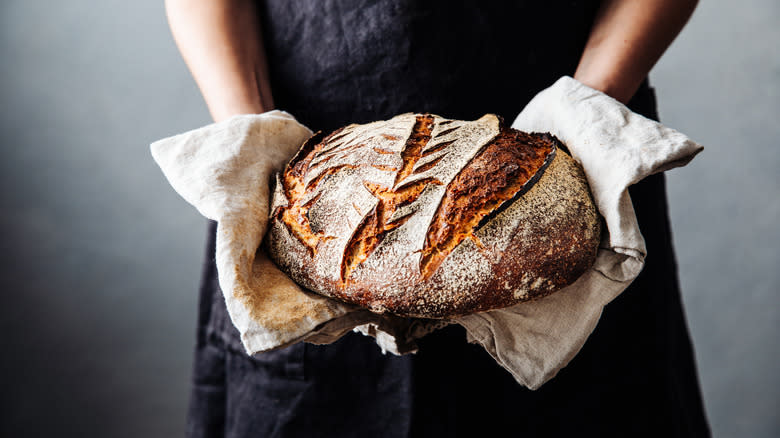
Maybe you've heard about the probiotic benefits of fermented foods. These are foods such as kimchi, sauerkraut, and kefir. They contain probiotic beneficial bacteria that can improve gut health. Now, you'd be forgiven for believing sourdough bread is also probiotic, but this is a false fact based on a simple misunderstanding.
Technically, sourdough bread is fermented. It goes through a process of fermentation while it rises. The starter itself contains a range of good bacteria and sourdough bread dough even contains Lactobacillus bacteria, which is known for its positive impact on gut health. The problem is that these bacteria are killed by high temperatures. So, when you bake your sourdough, any probiotic bacteria die in the process.
This means sourdough bread isn't probiotic. The starter and dough are, but unless you plan to chug shots of raw starter, you won't see any of the benefits of this. However, sourdough bread may still have some benefits for gut health. It contains prebiotics, which feed the good bacteria already in your gut, helping it to thrive.
Sourdough Starters Get Better With Age
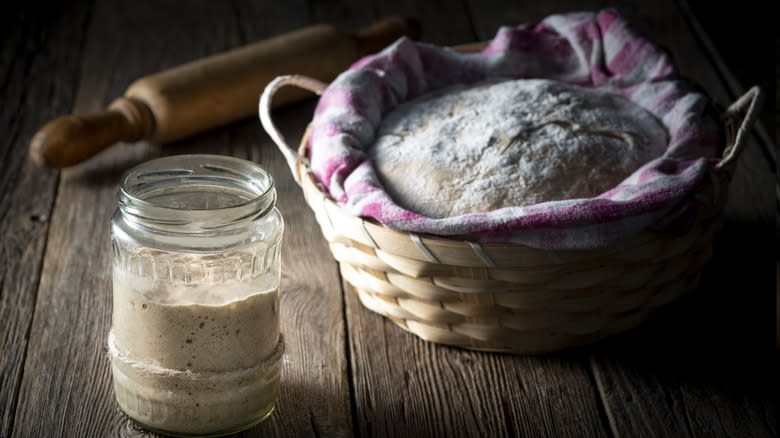
Is your baker friend bragging about their 100-year-old starter and how it makes the best bread? If so, they clearly don't understand that — unlike fine wine — sourdough starters don't necessarily get better with age. Rather than the age of the starter, it has much more to do with how healthy that starter is.
A starter that is just a few weeks old but is being fed regularly and thriving will produce better bread than a starter that's decades old but is currently being underfed and sluggish. Since you're constantly discarding parts of your starter and topping it up with new flour and water, what's going on with it right now plays more of a part in its performance than its history.
There is some anecdotal evidence of older starters having more flavor or producing better bread. We can't substantiate this, but if it is true, it might simply be because the starter is more biodiverse and is being fed regularly enough to maintain this biodiversity. In this case, it wouldn't necessarily be because of the age of the starter but because it happened to pick up a diverse range of yeasts and bacteria over the years and the person caring for it is doing a good job of maintaining it.
Read the original article on Mashed


